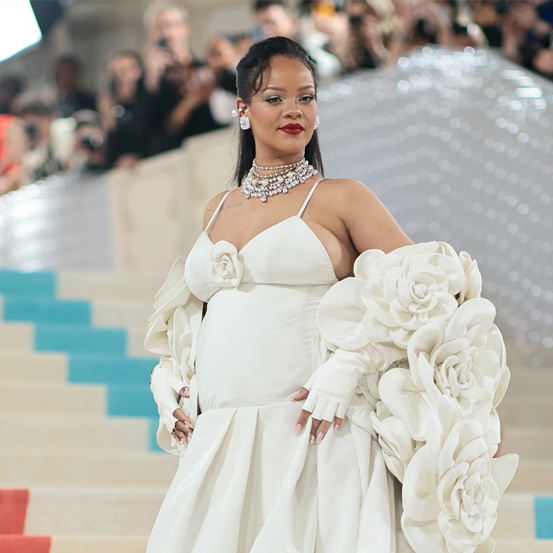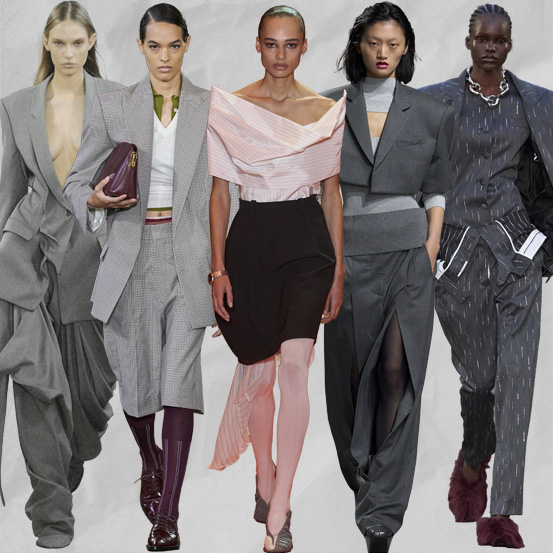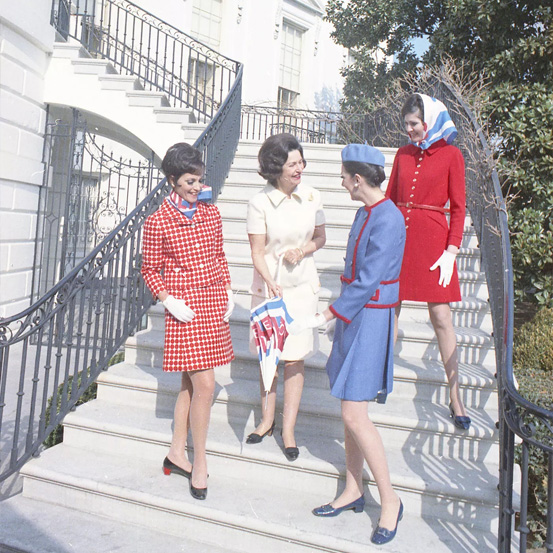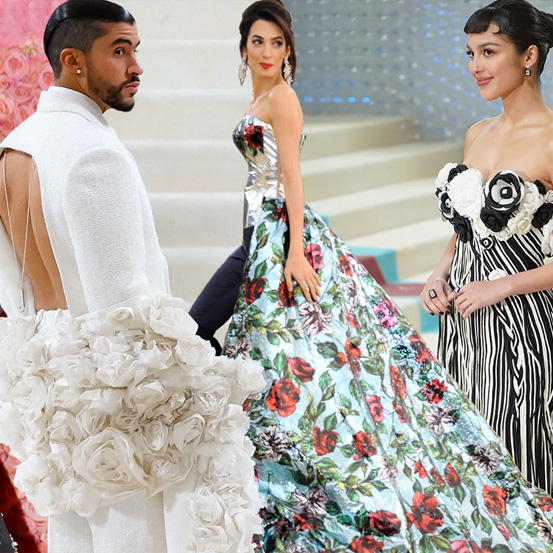“I am not a minimalist, but a purist,” says the German designer about her first museum exhibition in Frankfurt
“I am not a minimalist, but a purist,” says the German designer about her first museum exhibition in Frankfurt.
Jil Sander is fresh-faced and smiling as a brisk wind blows through the garden of the museum in Frankfurt am Main. No matter that the image of the German designer who defined female fashion over four decades is seen through a series of photographs. Nor that her home city is Hamburg, where she still has a studio, even after her stop-go presence at her brand came to a halt in 2013.This intense, pretty, exceptionally driven woman, who has worked all her life – she founded her business at age 24 in 1968 – is a purist and perfectionist. This is confirmed by the personal vision that underlines “Present Tense”, the exhibition of her life and work at the Museum Angewandten Kunst, where curator Matthias Wagner K has worked with her to make something intensely powerful out of spare simplicity.

Suzy at the Frankfurt exhibition honouring the work of Jil Sander (pictured)
Suzy at the Frankfurt exhibition honouring the work of Jil Sander (pictured)
Crédito:@SUZYMENKESVOGUE
From the digital films to the specially made clothes, all in the same material, and the passionate romance of the garden to the airy modernism of her recreated Paris store, this exhibition is designed to get to the heart of the matter. Jil Sander can best be described as fashion’s first feminist. Whatever merit might be given to Coco Chanel in the 1930s or Yves Saint Laurent’s launch of the female trouser suit in the 1960s, Jil has the strongest claim for empowering women through what they wear.
“I never thought of myself as a feminist, but maybe I was, since I was not happy with the way women presented themselves,” the designer says. “I think my work was more about the rapprochement of the sexes and a more androgynous look for men and women. I was looking for more supportive ways to dress myself as a working woman. And since my needs were collective needs in the era of women entering the business world, my work turned out to help them.”

Recreations of classic Jil Sander designs at the designer's retrospective in Frankfurt
Recreations of classic Jil Sander designs at the designer's retrospective in Frankfurt
Crédito: MUSEUM ANGEWANDTE KUNST
Describing an era of sweeping change, Jil reflected on her past in its relationship to women’s lives. “I needed the strength and the energy, and also for me it was very important to give class, quality and personality to clothing,” the designer explained. “It was a time when women had to ask their husbands if they could work, or if they could get a driver’s license! We had to give a lot of strength to women and give them the power that men knew. It was the start of globalisation, we were travelling, and needed clothes to feel strong.

Crédito: MUSEUM ANGEWANDTE KUNST
I’m maybe not a feminist, but I was quite young when I started, nothing was easy and I always said you need a lot of strength to do what you want to do when you have a vision and want to build a company. So I always believed in strong women. I’m not a feminist, but I was looking for strong personality.”The Frankfurt museum succeeds in telling a great deal in a minimalist way, to reflect Sander’s aesthetic. For example, there is a long line-up of inspirations: natural textures of leaves and branches, pieces of cloth in straw colours, and drawings provided from Jil’s descriptions. The basic construction reveals a secret, Matthias Wagner K reveals, with a display cabinet deliberately set at a sloping angle.“This is an idea from her atelier,” the curator explains. “All her shelves, displays, and window sills were always angular, so nobody could put anything private on it. You couldn’t even put a mug there. She always changed the shelves to an angular level so she couldn’t clutter. It was all focused on the work.”

Crédito: MUSEUM ANGEWANDTE KUNST
“The mood boards are almost like a diary,” he continued, “where she took patterns from magazines or collected different shades of colour, either in print or a fabric or a shape. She would pin them down and then come back to them at some point.”The exhibition opens with a broad selection of catwalk films, where an innocent 16-year-old Kate Moss is in full focus while the camera zooms in on many outfits to focus on details. The sheer volume of the clothes hits the viewer through a wall of images of Jil Sander men and women, as well as small digital clips. The background music for the exhibition, produced by French sound artist Frédéric Sanchez, creates a mesmerising effect of moving “sound clouds” that reflect the spare simplicity of the displays. These include a trio of architectural wooden mannequins, rolls of white paper with faintly different shades and textures, and men’s tailored jackets that might, in fact, be women’s. But where were the rest of the clothes?

Crédito: MUSEUM ANGEWANDTE KUNST
Turn a corner and there are just a few words from Jil written on the wall: “My aesthetic ideas develop out of what I sense from the Zeitgeist” or “What interests me is the new, the emerging”. Then a display of Jil Sander clothes from 1997-2014 is re-incarnated. There is virtually no Sander archive because, the curator says, of company changes and Jil’s interests being in the present, not the past. Although he has had enquiries about the exhibition from London’s Victoria and Albert Museum and another in California, the number of surviving early pieces is as minimal as Jil’s designs.
Crédito: MUSEUM ANGEWANDTE KUNST
Exceptions are a sprinkle of archival clothes: a black sweater with a white skirt patterned with circles; dark garments illuminated with gold spheres, like a glowing moon; a black and white dress with the texture of feathers; and a dress with horizontal fringes. There are also handbags and shoes, especially those made in collaboration with Puma, starting in 1996 when sneakers were still seen mainly as sportswear.The designer’s explanation for recreating most of the clothes on display, all in the same Japanese material, is so that viewers should focus on the cut. But for the curator, the sparse-and-spare outfits, impeccably tailored, send out an important message, whether the clothes are from the high-end collections or the functional, low-cost +J designs for Japanese company Uniqlo.

From Suzy's archive, Jil Sander in her studio with a house model during the designer's heyday as head of her label
From Suzy's archive, Jil Sander in her studio with a house model during the designer's heyday as head of her label
Crédito: @SUZYMENKESVOGUE
“That’s where she got her talent from, her craftsmanship,” Wagner K says. “She is a textile engineer and not a designer. So, for her, structure and sculpture were interesting. The drawings were developed afterwards. She fitted on the mannequins and somebody came afterwards to do the drawings.”The curator is eager to look beyond stereotypes and shows an unexpected burst of pattern and colour when Jil’s clothes meld with the wall coverings in an assemblage of vividly coloured Afghan embroideries by Italian conceptual artist Alighiero e Boetti, who died in 1994.

A rare burst of colour from Jil Sander, featuring her collaboration with Italian conceptual artist Alighiero e Betti, which was inspired by Afghan embroidery
A rare burst of colour from Jil Sander, featuring her collaboration with Italian conceptual artist Alighiero e Betti, which was inspired by Afghan embroidery
Crédito: MUSEUM ANGEWANDTE KUNST PAUL WARCHOL
While there are images of clothes – or Jil – by famous photographers of her era throughout the show, the upper floor focuses mainly on her interests, her relationship with photographers, her passion for gardens and her ongoing fragrance line, launched at the start of the 1980s with the significant name of “Pure”.

Crédito: MUSEUM ANGEWANDTE KUNS
A video of the garden at Sissinghurst Castle in England immediately suggests a different, romantic side of Sander – one linked to her friendship with the late Dickie Mommsen.
“I shared a passion for gardening with Dickie for more than 30 years, and the garden room in the exhibition is my way of including her,” Jil says. “We started this garden in the country. First you start small and then you think, ‘I am creative’, and then you have a vision. The film in the museum… I was not sure if I wanted to show it,” she continues, referring to the projections of gliding and swooping camera work, like a bird’s eye view. “It’s not like a BBC garden film – it’s more emotional, more spiritual,” she says. “It’s a life job and a garden is also a lot of responsibility. But my heart is in nature. So I love to do that wherever I am. My friend Dickie was also very delighted to be able to, so we would sit on the bench together and cut roses. As you know, she is gone and I have to go on, so I felt the film is a little salute to her and for our garden.”

Jil Sander with her friend, the late Dickie Mommsen
Jil Sander with her friend, the late Dickie Mommsen
Crédito: @SUZYMENKESVOGUE
Like plants pushing through the earth, the few words among the photographs in the museum catalogue come in clusters: “L for luxury, language, lightness” or “G for garden, gender, glasses”. Among them is a rallying cry for simplicity in the letter M.“My roots are in the Bauhaus movement, which applied functional rationality to the design of practical everyday life,” the designer explains. “Streamlined beauty, clear structures, reduction to the essential and free movement. But functional rationality is only the backbone of my work. I always look for contemporary forms of sophistication and sensual simplicity. I want fashion to be liberating in a subtle way… If there is such a thing as my own signature, it lies in a sense of structure, in quiet beauty and serenity.”

The Jil Sander aesthetic has its roots in the Bauhaus movement, and its focus on the pure and functional
The Jil Sander aesthetic has its roots in the Bauhaus movement, and its focus on the pure and functional
Crédito: MUSEUM ANGEWANDTE KUNST PAUL WARCHOL
The show ends in an airy room, its wall of windows opening on the river and Frankfurt’s skyline, mixing classic and modern buildings. The space was inspired by the Jil Sander flagship store on Avenue Montaigne in Paris in 1993, created with American architect Michael Gabellini.
She tells me a story about Dickie saying that the Sander building was so modern, all the other Paris brands would have to raise their game to compete. What about Jil Sander today? The brand has had a lurching progress since the designer first fell out with Patrizio Bertelli of Prada (which bought a 75% stake in the label in 1999) and has seen a variety of passing creative directors, including Raf Simons. Lucie and Luke Meier, a married team, took over earlier this year and gave their interpretation of modern purity in a show held in a stark Milan building by the late Zaha Hadid.
“We have a relationship, and I want them to be successful,” Jill says. “I cross my fingers now that they have a new movement, and I am very emotional about it. It’s like a mother wanting their child to be...” Her voice trails away. I ask one last question: What does Jil, the founding mother of female modernity, think about the position of women today? Have we moved forward?

Crédito: @SUZYMENKESVOGUE
“Yes,” Jil says, emphatically. “I mean, on the inside it has changed. But as you see now, there is the whole story in the United States of Weinstein and others. Women have to be strong. And we have to support women so that they are able to be in important, responsible jobs. I was always a believer in both, and with my company, I thought women and men needed to work together. I think a woman’s situation is much more open today. It has changed a lot. There is still a lot of need but we have to be optimistic and move forward.”Although she does not say it, Jil Sander herself has moved forward from sharp severity to sweet serenity, making her an icon of feminism yesterday and today.
"Jil Sander. Present Tense" runs until the 6th of May 2018 at the Museum Angewandte Kunst in Frankfurt (www.museumangewandtekunst.de)
Most popular

Tudo o que deve saber sobre a Met Gala de 2024: Tema, anfitriões e muito mais
18 Apr 2024

.png)
Relacionados

Tendências do guarda-roupa das nossas mães e avós que regressam na primavera/verão de 2024
19 Apr 2024

Tudo o que deve saber sobre a Met Gala de 2024: Tema, anfitriões e muito mais
18 Apr 2024



